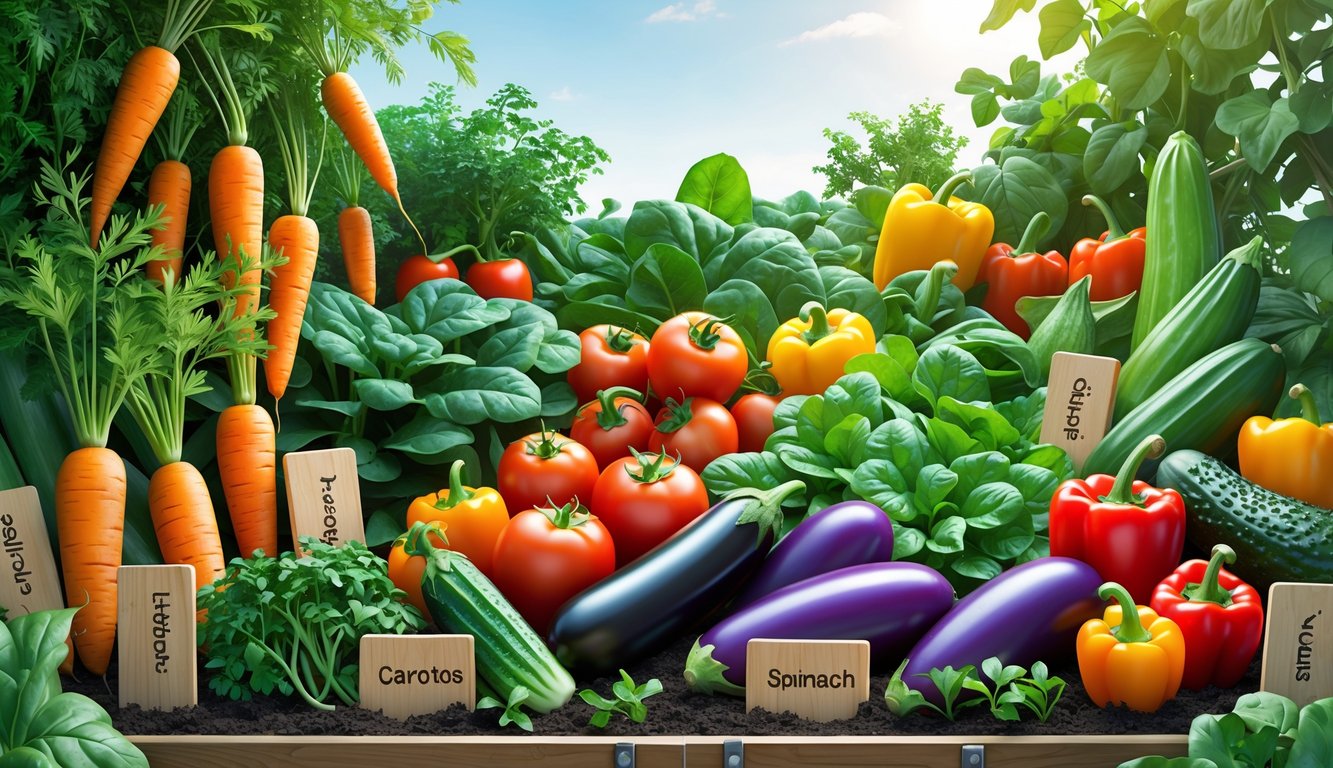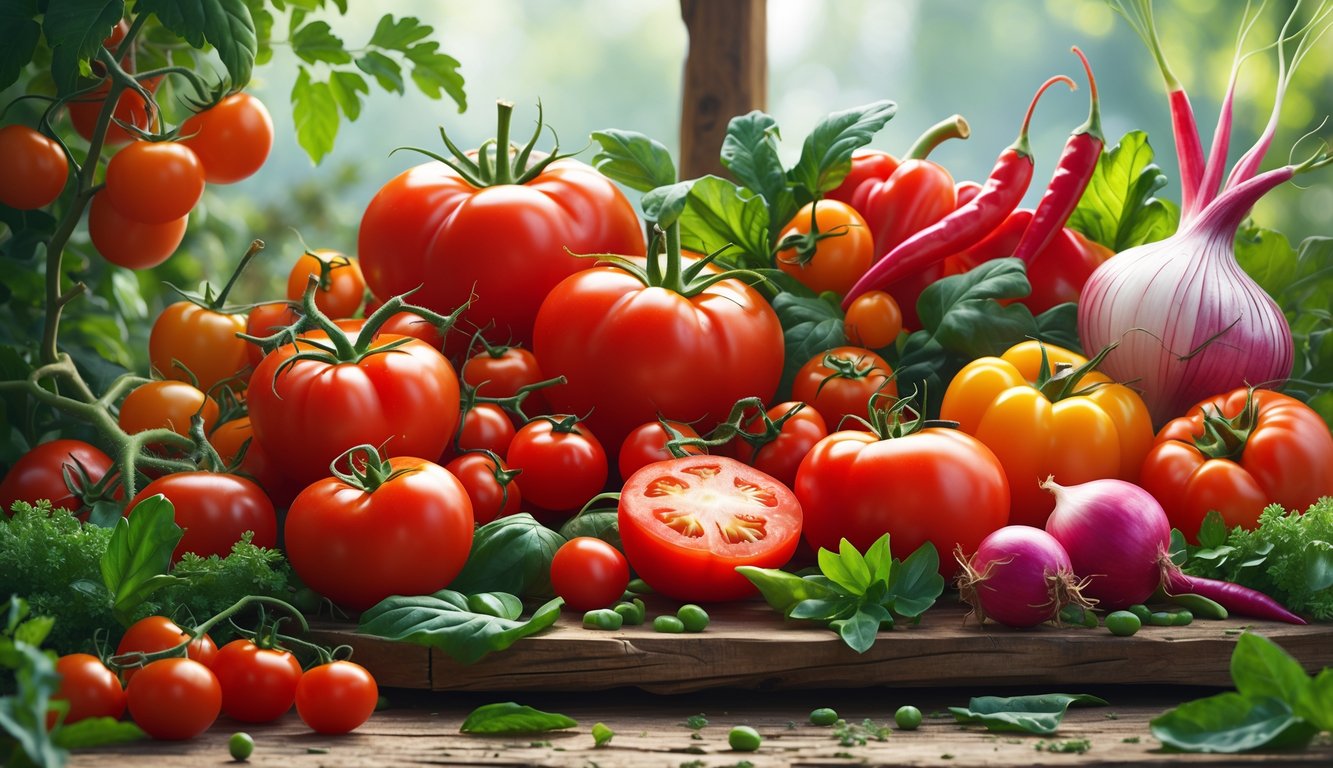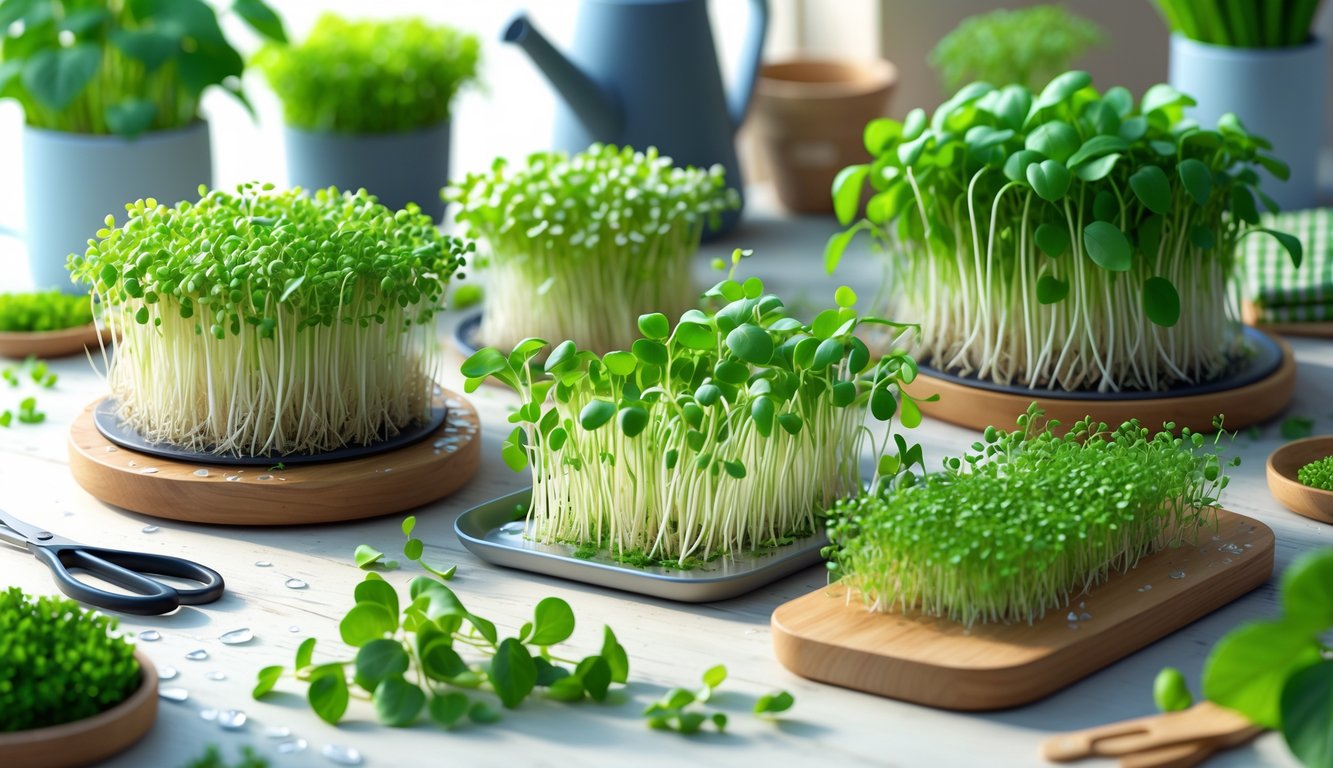
Tomatoes and Red Vegetables for Disease Prevention

Nobody warned me tomatoes would stain every cutting board. I learned the hard way. Still, apparently, it’s worth it—study after study links red veggies to lower chronic disease rates. Plants use color as chemical warfare, I guess, and some of those chemicals actually do something for us. (Beets, though. Why won’t anyone eat beets?)
Tomatoes and Lycopene
Yesterday I stained my shirt with ketchup. Should I be proud? Lycopene is real, not just a “superfood” buzzword. Medical studies (Harvard Health says a cup of cooked tomatoes has almost all your vitamin C for the day and a quarter of your vitamin A—look it up if you want) tie lycopene to lower cancer risk, especially prostate, and less inflammation. That’s not an excuse to eat more pizza. It’s about tomato paste and sauce.
Cooked tomatoes, not raw. Who knew? Lycopene’s more available after heating. Science backs that up, apparently. Vitamin K is in there too, but nobody cares unless you’re on blood thinners. It’s important for bones, blood clotting, all that. Sometimes I think whoever invented caprese salad deserves a medal.
Red Cabbage and Anthocyanins
Red cabbage. It stains your sink purple. No one warns you about that. Anthocyanins, apparently. They’re these pigment things—flavonoids, technically—that, if you believe the NIH and a pile of meta-analyses, do a lot more than just dye your cutting board. Vascular health, oxidative stress, heart stuff. Supposedly. I remember someone (maybe an overzealous nutritionist?) calling anthocyanins “nature’s sunscreen.” That’s…not really true, but the antioxidant thing? That holds up.
Here’s the kicker: raw cabbage, the crunchy kind, seems to hang onto way more of these compounds than the stuff you steam into oblivion. Vitamin C? Sometimes more per cup than oranges, which just feels like cheating. Depends on the season, I guess. Epidemiologists argue, as always, but most studies I’ve seen say eating a bunch of anthocyanin-rich foods—red cabbage, purple carrots, blackberries—links to people living longer. Or at least dying less? If you hate coleslaw, though, none of this matters. “Anticancer slaw”—try pitching that at dinner and watch everyone scatter.
Sprouts and Microgreens: Small But Mighty

Seriously, a whole bag of baby greens disappears in two lunches, but a handful of microgreens or sprouts? Feels like cheating. Is it a “nutrient-dense” hack or just me falling for hype? Honestly, the numbers don’t even argue—these things are loaded.
Microgreens for Nutrient Density
Last time I tried to “upgrade” my salad, I ended up with limp kale and regret. Microgreens, though—those actually work. I know it sounds like influencer nonsense, but a 2012 University of Maryland study found microgreens like red cabbage can have, what, six times the vitamin C and forty times the vitamin E compared to their adult versions? Go try that with the sad spinach in your crisper. Or don’t.
It’s kind of wild (and a little embarrassing) that something I grew in a plastic tray on my windowsill outperformed every lettuce I ever babied in the garden. I’ve never actually dissected a microgreen to figure out where all the nutrients go, and I’m not about to start. Want variety? Radish, broccoli, sunflower microgreens—nutritionists love those, and not just for Instagram. They’re not just garnish. According to Foodwise’s “Small but Mighty: Sprouts and Microgreens Pack a Punch”, they’re legit, no matter how ugly my breakfast looks.
I just toss them on eggs or soup and pretend I’m a food blogger. Never looks as good as the photos, but whatever.
Sprouts to Support Immune System
Some days, my immune system feels like it’s out to lunch without me. Sprouts? They’re retro. Alfalfa always makes me think of 1990s sandwich shops and slimy fridge disasters. But facts are facts: NIH’s Sprouts and Microgreens—Novel Food Sources for Healthy Diets claims raw sprouts (especially broccoli sprouts) are packed with sulforaphane, which apparently flips on all sorts of protective pathways in your cells.
Nutritionists get weirdly excited about sprouted seeds—something about vitamin C, folate, antioxidants peaking right when you eat them. My fridge broccoli never manages that. Texture? Satisfying but also a little creepy. But if homegrown sprouts really help immune resilience (and maybe inflammation, if you trust the ongoing studies), I’ll risk a seed hull in my teeth.
Pro tip from many failed attempts: filtered water, rinse twice a day, or you’ll end up with a jar of slime. At least sprouts have more protein than most leafy greens. And—bonus—they’re the only thing I can grow indoors that doesn’t end in an aphid apocalypse.
Supporting Cardiovascular And Brain Health With Unique Varieties
Picking veggies for heart and brain health? Supposed to be easy, right? Grab some spinach, call it a day. Except, turns out, the oddballs—think asparagus, mushrooms, seaweed—are way more interesting if you ask anyone who reads nutrition journals for fun.
Asparagus: Heart-Friendly Spear
My neighbor is obsessed with asparagus. Grows it every year, brags about it, swears it’s not just for the joy of spears. Mayo Clinic says asparagus brings potassium (202 mg/100g) and folate, which actually matter for blood pressure and homocysteine—stuff that, when you look at the research, really does tie to lower heart disease risk.
But here’s what bugs me: people grill it once, then act shocked their cholesterol isn’t magically fixed. It’s not a one-time deal. Potassium helps, but only if you don’t drown your asparagus in salty sauces or ignore the rest of your diet. Fiber? It’s there (1.8g/100g), but it’s only useful if you actually eat it regularly. Tomatoes wish they had this kind of PR. Asparagus keeps winning for homegrown heart points, mostly thanks to vitamin K and a sprinkle of antioxidants.
Mushrooms and Brain Health
Mushrooms and brain health—sure. I once met a neurologist who carried oyster mushrooms in jars and called them “brain fuel.” PubMed’s not exactly overflowing with clear answers, but studies on B-vitamins (niacin, riboflavin) and ergothioneine hint at links to cognition and less decline with age.
But not all mushrooms are equal. Lion’s mane and shiitake get all the buzz; plain button mushrooms, not so much. Don’t bother eating them raw for “maximum benefit”—they’re more useful sautéed. At least, that’s what my old dietetics professor said, and she forgot her lunch more than once but never her citations.
Potassium again—318 mg/100g, which adds up, especially if you’re doing the whole Mediterranean thing (Harvard Health says so: link). Trying to sharpen your mind with fungus is weird, but honestly, why not? The evidence is messy, but sometimes messy is good enough.
Seaweed and Thyroid Hormones
Seaweed. Sushi habits never die. Technically it’s “marine macroalgae,” which sounds fancy for something I snack on like chips. Iodine? That’s the main event. But it’s a double-edged sword: too much (or the wrong kind—kombu, looking at you), and your thyroid goes haywire. My endocrinologist literally muttered that kelp tablets are “overkill for 90% of people.” Not wrong.
No other homegrown veggie screams “thyroid” like seaweed. Iodine’s essential for T3 and T4, but the amount varies wildly. One nori sheet gives you 25–50 mcg; kombu can hit the milligram range, which feels…excessive. FDA probably wouldn’t approve my wording.
Seaweed’s got a sneaky heart angle, too—soluble fiber (alginate) and some omega-3 precursors. You barely notice them under all the brine, but if you’re sick of kale chips, it’s a decent swap. Pro tip: dulse in a smoothie tastes exactly like low tide, but hey, at least my thyroid didn’t rebel.